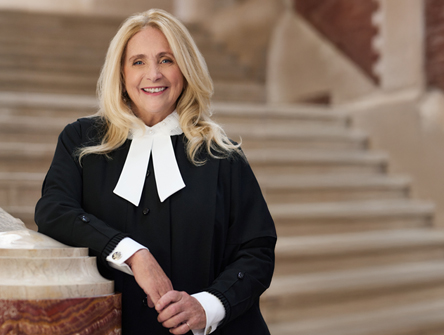Reforming Indigenous child welfare
The federal bill tabled last week is good start to return jurisdiction over child welfare to Indigenous groups, says Ottawa lawyer David Taylor. But questions remain about ensuring that proper funding follows.

Last week, the federal government introduced Bill C-92, which seeks to affirm Indigenous peoples' inherent right to exercise jurisdiction over child and family services. CBA National caught up with David Taylor, an Ottawa-based lawyer at Conway litigation with a practice focused on public law, and who has represented Indigenous clients in child and family services cases.
CBA National: Back in 2015 when it got elected, this government promised to restore Canada’s relationship with Indigenous people. How big is this?
DT: It’s a major piece, and I can only comment, you know, from my perspective as a non-indigenous Canadian committed to reconciliation. But I think if you look at past Human Rights Tribunal orders, you know there’s a lot in that reasoning about how fundamental a nation’s children are to the nation’s survival and thriving. And really, there’s been a huge emphasis on fixing the historical disadvantage and recognizing the importance of different needs based on particular cultural context. To the extent that something like this could help build something that puts that into place, I think it’s really key. But it takes more than words in a bill to make that happen. You need dollars going to the right programs and people being able to do the work that needs to be done on the ground that’s going to bring that into being. So I think it’s a first step, but an incomplete first step.
N: What does it do right, and what’s missing?
DT: It provides what looks to be a clear mechanism for First Nations, Inuit, and Métis to assert their jurisdiction over child welfare. They can make their laws, and the legislation recognizes them as valid. But for those laws to essentially carry weight, one of two things has to happen. Either there is a coordination agreement in place between the federal and provincial government. Or, if there’s no agreement for whatever reason, then as long as the First Nation-Inuit-Métis group has made reasonable efforts to negotiate, then their law comes into force after 12 months. However, there are some question marks around funding, which is an incredibly important part of delivering effective child welfare services for children on reserve.
N: What’s the funding issue then?
DT: The Human Rights Tribunal has concluded that the funding model that Canada was running essentially operates like a perverse incentive to take children into care because it wouldn’t fund things for kids at home – only for kids taken into care. There’s been work done in the last few years on establishing a more prevention-based formula, and we see now a lot of prevention-based language in the bill. But if First Nations, Inuit, and Métis agencies don’t have the resources they need to put those services into place, then the question is, what happens next, right? That’s why I say it’s a first step.
N: Is the government edgy about committing to statutory funding?
DT: It’s a good question, but it’s done in other contexts. Just look at legislation that implements land claim agreements, like the Nunavut Land Claim Agreement Act from 1993. There’s now law on the books that says that commitments in these agreements are going to be funded. So we would have to have some kind of statutory basis for funding that is something more than government-to-government discretionary funding.
N: Would that be negotiated in the coordinating agreements with the federal government and the provinces?
DT: Yes, but there’s no guarantee of results there and no real certainty in terms of what that’s going to mean. And so there’s the scenario where you’ve got the First Nation that has made reasonable efforts for 12 months to conclude one of these agreements, but for whatever reason couldn’t. And then now our laws have the force of federal law and prevail over federal and provincial law, but we don’t have any funding to back that up. The way the bill is designed, if everybody is operating with the best of intentions funding can get out there, but funding doesn’t always follow common sense in the child welfare area.
N: Do you see any other issues with the bill that could be improved?
DT: Yes, around how is this is actually going to work on the ground. So, you’re going to have First Nations agencies that, to this point, have only exercised their jurisdiction on reserve and will now be able to go off reserve. And also, you’re going to have non-indigenous agencies to which these laws will apply. Some provinces, like Ontario, already has some experience around how to deal with First Nations, Inuit and Métis youth and so that shouldn’t be a completely foreign concept for them. But there may be other provinces where they don’t have the same experience giving primary consideration or a different treatment to First Nations, Inuit, and Métis youth. And so, what kind of support will they get? And how will they handle conflicts between a non-First Nations agency and a First Nations agency who look to assert jurisdiction over a child or a family? To me, that’s a big question. Having set up the backdrop or the framework, how is that actually going to play out in the real world?


